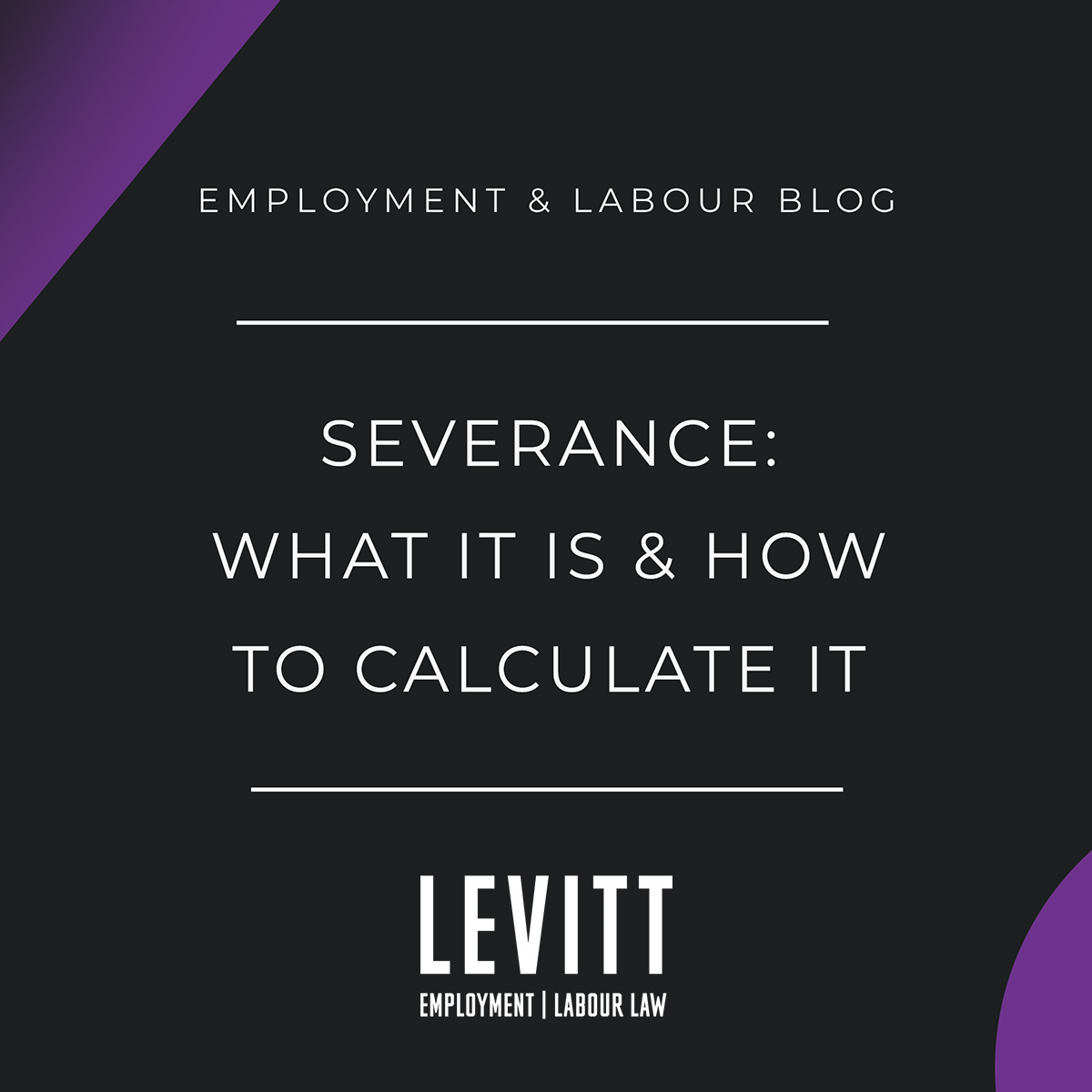What is Severance Pay?
Severance pay is compensation paid to an employee whose employment has been severed by their employer. It is meant to compensate long-term employees for losses upon termination. Although severance pay is commonly conflated with termination pay, which is given in place of the required notice of termination of employment, they are two different things. To learn more about the difference between termination and severance pay click here
When Does Severance Pay get Paid?
Severance pay is pay is for severed employees. An employee is “severed” when their employer:
- dismisses or stops employing the employee, including when the employer is bankrupt.
- constructively dismisses the employee and the employee resigns in a reasonable amount of time.
- lays the employee off for 35 weeks or more within a period of 52 consecutive weeks.
- lays off the employee because the business closes permanently.
- The employee resigns after receiving written notice of termination from the employer and the employee has given two weeks’ notice.
- example: an employee who has been given a notice of termination can resign and keep the right to severance pay. To keep this right the employee must give two weeks’ written notice to the employer of their resignation and the resignation must also take effect during the statutory notice period – the period of written notice that is required to be given by the employer
- à Employee has worked 7 years, entitled to 7 week’s notice of termination under the ESA. Employer gives 10 weeks’ notice. Employee must give at least 2 weeks’ written notice of her resignation. As long as the employee’s resignation takes effect during the statutory notice period the employee continues to be entitled to severance pay
Who Qualifies for Severance Pay?
An employee qualifies for severance pay if their employment is severed and:
- the employee has worked for the employer for 5 years or more and
- the employer has a payroll in Ontario of at least $2.5 million OR severed the employment of 50 or more employees in a 6-month period because all or part of the business permanently closed.
How Many Days Does It Take to Get Severance Pay?
Severance must be paid either 7 days after employment is severed or on what would have been the employee’s next pay day – whichever is later. Employers also have the option of paying in installments. An installment plan requires the written consent of the employee or approval from the Director of Employment Standards at the Ministry of Labour. Installment plans can be no more 3 years and if the employer fails to make a payment, all the employee’s severance becomes due immediately.
How to Calculate Severance Pay
The Employment Standards Act sets out how to calculate severance pay: multiply the employee’s regular wages for a regular work week by the sum of the number of completed years of employment and the number of completed months of employment divided by 12 for a year that is not completed.
However, the formula set out in the ESA sets only the minimum requirements for severance, known as the statutory entitlement. An employee’s statutory entitlement is 1 week of severance pay per year of employment, with a maximum of 26 weeks.
Employees may also be entitled to common law severance pay. Common law severance is typically more money than the statutory minimum. However, accessing these entitlements generally requires a lawyer to assist with negotiating or litigating for the maximum amount. Employees are not entitled to common law severance if they have an employment contract that stipulates a different calculation of their severance package or limits their entitlements to their statutory minimums.
There are several factors involved in calculating common law entitlements including age, length of employment, position, and more. These factors can affect the amount of severance pay owed to an employee. For example, older employees are typically entitled to larger notice periods and associated payouts, as are those who held more senior or managerial positions. Even the availability of new employment, and the possibility of mitigation, is a factor that must be taken into consideration by employers.
The bottom line is that determining severance pay is not as simple as plugging numbers into a calculator. The basic ESA formula for calculating severance can give you a rough estimate of the amount to which you are entitled, but you could be entitled to much more. Determining the full amount of severance pay to which you are entitled requires a careful assessment of your employment, any agreements or contract, and the consideration of several complex factors. To get the maximum amount rightfully owed to you it is important to get the right legal help and assess your situation fully.

